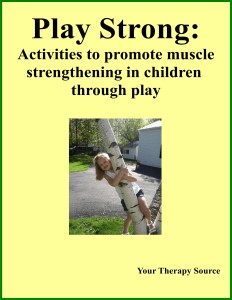Association Between Muscular Strength and Cardiometabolic Risk in Adolescents
 Pediatrics published research on the gender-specific independent association between muscular strength and cardiometabolic risk clustering in 1421 children. The researchers used a principal component analysis to determine the pattern of risk clustering and to derive a continuous aggregate score (MetScore) from various cardiometabolic risk factors (i.e. % body fat, blood pressure, etc), body mass index (BMI), estimated cardiovascular fitness, muscular strength and more. The results indicated the following:
Pediatrics published research on the gender-specific independent association between muscular strength and cardiometabolic risk clustering in 1421 children. The researchers used a principal component analysis to determine the pattern of risk clustering and to derive a continuous aggregate score (MetScore) from various cardiometabolic risk factors (i.e. % body fat, blood pressure, etc), body mass index (BMI), estimated cardiovascular fitness, muscular strength and more. The results indicated the following:
1. significant differences were present in cardiometabolic profiles across strength tertiles, for the stronger adolescents had lower overall risk.
2. age, BMI, cardiorespiratory fitness, physical activity participation, and strength were all individually correlated with multiple risk components and the overall METScore
3. in the adjusted model, only BMI, physical inactivity, and normalized strength capacity emerged as significant predictors of MetScore
4. Percent body fat was the strongest loading coefficient within the principal component analysis–derived MetScore outcome.
In summary, the study showed that boys and girls with greater strength-to-body mass ratios had lower BMIs, lower percent body fat, smaller waist circumferences, higher levels of cardiorespiratory fitness, and significantly lower clinical markers of risk.
The researchers concluded that normalized strength is independently associated with lower cardiometabolic risk in boys and girls. In addition, percent of body fat was associated with all cardiometabolic risk factors and carried the strongest loading coefficient. The researchers stressed the importance of early strength acquisition and healthy body composition in childhood.
[subscribe2]
Reference: Mark D. Peterson, William A. Saltarelli, Paul S. Visich, and Paul M. Gordon. Strength Capacity and Cardiometabolic Risk Clustering in Adolescents. Pediatrics peds.2013-3169; published ahead of print March 31, 2014, doi:10.1542/peds.2013-3169
This is a collection of 40+ activities that promote muscle strengthening in children. The activities are great for your pediatric occupational and physical therapy sessions for children with varying abilities. This is an excellent resource for pediatric therapists. Find out more information at https://www.yourtherapysource.com/playstrong.html



